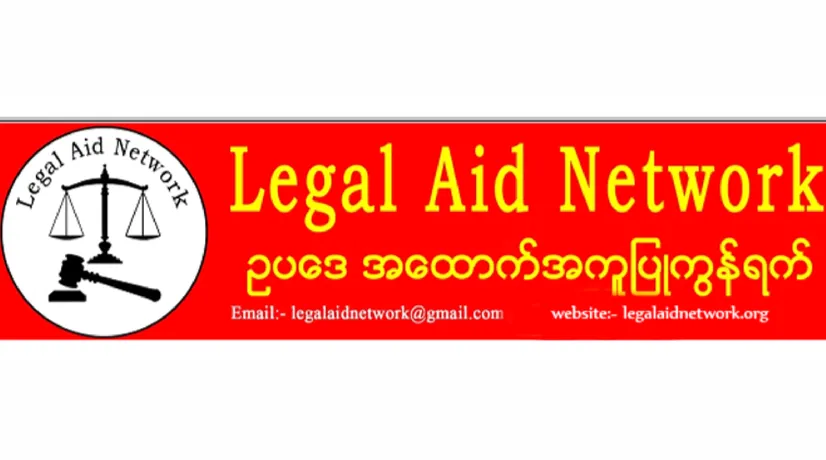Victims’ Quest for Accountability of Aerial Bombardments in Burma: A Common Plan for Eradication of the Military Dictatorship in Burma
30 December 2022

Executive Summary
This report provides analysis of the indiscriminate aerial bombardments launched by the Tatmadaw1 throughout the country especially after the 2021 military coup—with a special focus on the recent bombardments in A Nang Pa, Hpakant township, Kachin State. Despite the stated
bombardments seeming like a harbinger of death for civilian victims, they have, in turn, become the case for the senior military commanders, led by Min Aung Hlaing, who have been providing orders from their high command headquarters located in Nay Pyi Taw, the capital of Burma. How can it be a reality? In that regard, this report elaborates in detail.
For over 70 years, the civil war in Burma has proved that, if the Tatmadaw continues to exist as
a major state institution, serious human rights violations amounting to the gravest crimes of international concern will never be deterred. Continued Tatmadaw rule would also mean no genuine peace—nor justice, freedom, or development for all ethnic nationalities—can ever be achieved. Lessons learnt from the roughly 60 years of ostensible peace-seeking processes starting in 1963 following the 1962 military coup vividly indicate that all so-called peace-related dialogues, including various types of ceasefires with the Tatmadaw, have unequivocally failed due to the lack of the rule of law. As far as Burma is concerned, the concept of institutional reform no longer suffices. This report therefore urges all stakeholders to exert efforts that support the emergence of a new Federal Union Army to replace the position of the Tatmadaw and ultimately uphold the rule of law.
Chapter 2 provides a general background of the country before and after the coup, focusing on
aerial attacks against civilians. Then, chapter 3 details some of the worst aerial attacks launched by the Tatmadaw in other states/provinces and regions that have resulted in high civilian casualties. A brief case summary of the A Nang Pa airstrike, a contextual description of the situation of the site, and the nature of the object of the attack, which is the central focus of this report, are laid out in chapter 4.
Subsequently, chapter 5 addresses the legal issues that arose from the aerial bombings of A Nang Pa from the three perspectives: 1) whether the geographic feature of the site effectively contributed to military objectives, 2) whether the Tatmadaw had knowledge of the civilian presence in the vicinity, and 3) the systematic and widespread nature of the airstrike constituting crimes against humanity. While the first legal question argues the legitimacy of the site as a military object by invoking the Geneva Conventions and customary rules of International Humanitarian Laws, the second question deals with the mental element, the perpetrators’ behavior, and the means and methods used to carry out the airstrikes. The last legal question deals with the prerequisite elements of the crimes against humanity provided for in the Rome Statue of the ICC. Moreover, this chapter highlights notable previous decisions and judgements of the international courts potentially relevant to the case of Burma.
Under the title of a common plan to keep Min Aung Hlaing in power, chapter 6 contrasts the case
of Laurent Gbagbo, the President of Ivory Coast, and the case of Min Aung Hlaing, the military coup maker in Burma. The former was acquitted by the ICC, while the latter is currently enmeshed in the process that leads to an ICC trial. In the case of Ivory Coast, the ICC prosecutor might have failed to prove that President Laurent Gbagbo committed such crimes.
Chapter 7 offers a conclusive analysis of all related societal, political, and legal factors that have
influenced Burma, focusing on impunity and immunity issues from the perspective of international law. In addition, the rationale behind Min Aung Hlaing orchestrating the illegal coup and desperately trying to retain power to avoid criminal accountability is somewhat covered. The chapter indicates too that, to achieve stability and long-term peace, Burma must still carefully address people’s rights to selfdetermination. Such actions will lead to the emergence of a federalism suited to Burma with the underpinning of the rule of law. In addition, responsibility of states to comply with international law, transitional justice related issue and national defense authorization act – NDAA, 2022, (USA) are also scrutinized.
Chapter 8 covers the major recommendations of our LAN, inter alia, that, despite maintaining
ethnic nationalism leading to the emergence of a federalism suited to Burma, the protection of human rights with the underpinning of the rule of law must be a prime priority. Such protection of rights must be undertaken, at a minimum, in line with the Geneva Convention, also known as the law of war, even in a non-international armed conflict. To this end, in connection with the 2020 election results, constitutionalism that focuses on limited government concepts must be activated. Finally, a strong national legal order – which is essential for a just, peaceful and prosperous society – is recommended highlighting the core and distinguishing feature of law.
Download full report
View the original
Announcements
21 May 2025
Open letter: Malaysia must lead ASEAN with principle, not hypocrisy, to address the Myanmar crisis

Progressive Voice is a participatory rights-based policy research and advocacy organization rooted in civil society, that maintains strong networks and relationships with grassroots organizations and community-based organizations throughout Myanmar. It acts as a bridge to the international community and international policymakers by amplifying voices from the ground, and advocating for a rights-based policy narrative.